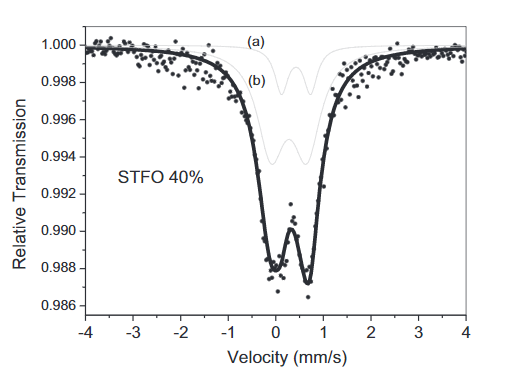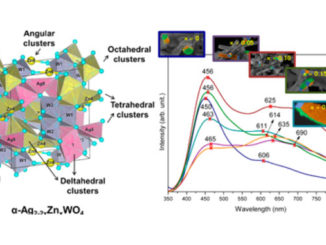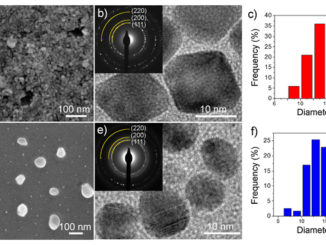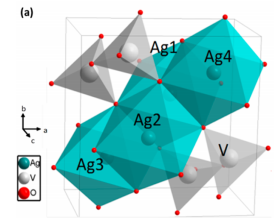
SrTi1-yFeyO3 samples obtained by hydrothermal method: The effect of the amount of Fe on structural and photocatalytic properties
Abstract: This manuscript describes the synthesis and the photocatalytic efficiency of SrTiO3 (STO) and SrTi1-yFe(y)O(3) (STFO, with 2.5, 5, 10, 25 and 40 mol% of Fe) materials evaluated by monitoring the photodegradation of methylene blue (MB) dye under visible and UVC irradiation. Samples synthesized by conventional hydrothermal method were characterized by X-ray diffraction (XRD), scanning electron microscopy (SEM), N-2 adsorption isotherms, UV-Vis diffuse reflectance spectroscopy (DRS), X-ray absorption spectroscopy (XAS) and Mossbauer spectroscopy. The results show that a controlled introduction of Fe into Ti sites caused changes in morphology, local order, band gap, textural properties and photoactivity of the STO compound. By increasing the Fe content, the surface roughness was also increased when compared with the STO sample. Furthermore, the highest amount of Fe caused significant changes in the STO lattice, especially in relation to the local order around Ti atoms. The Mossbauer analysis confirmed that Ti4+ atoms were replaced by Fe3+. The sample with the lower amount of Fe (2.5 mol%) presented photoactivity similar to that of pure STO. The samples containing intermediate amounts of Fe (5 and 10 mol%) presented good performances on the methylene blue (MB) dye photodegradation, while others with higher amounts of Fe (25 and 40 mol%) led to a large distortion of the crystalline structure, which disfavored the photocatalytic performance. The enhanced photoactivity of the some STFO samples was related to three combined effects: an improvement of the textural property; a decrease in the rate of electron-hole recombination; and a broadening of the photocatalyst optical absorption band, which is important for the photodegradation under visible irradiation. These positive characteristics were predominant for both 5 mol% and 10 mol% STFO samples. The one with 5 mol% has presented the best performance for MB photodegradation, which was mainly attributed to its best textural properties.
Author(s): Mourao, HAJL; Lopes, OF; Avansi, W; Pires, MJM; Souza, S; Ribeiro, C; Mastelaro, VR
MATERIALS SCIENCE IN SEMICONDUCTOR PROCESSING
Volume: 68 Pages: 140-146 Published: SEP 2017
DOI: 10.1016/j.mssp.2017.05.033




